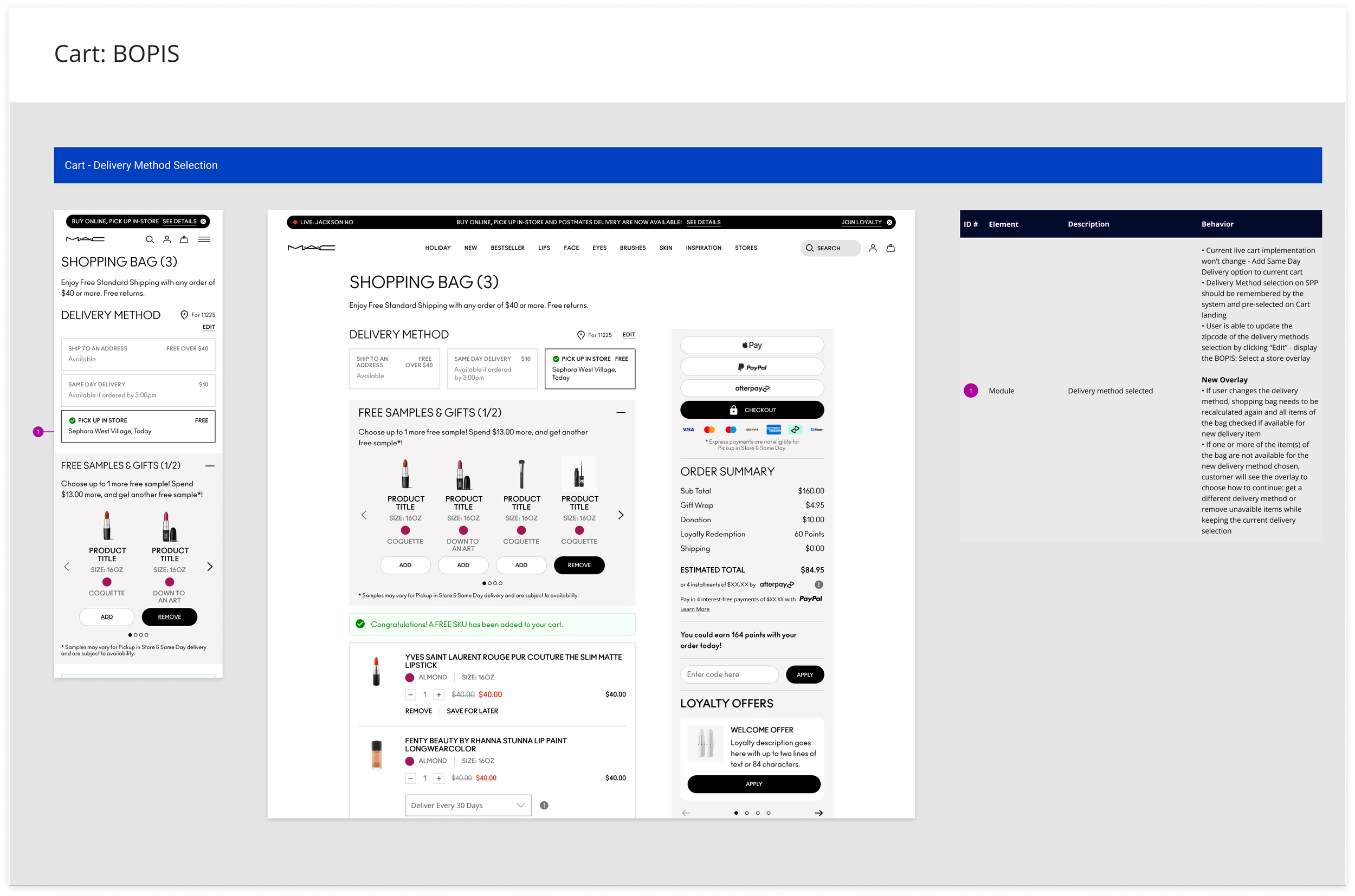
Estée Lauder - Store Pickup & Delivery Methods
Exploring alternatives for delivery methods to seamlessly connect online browsing with in-person shopping for added convenience
What Problem Are We Solving & Why?
Delivery alternatives offer our customers the convenience of online browsing paired with the immediacy of in-person shopping. Understanding user experiences, mental models and goals will help us design more presentations of delivery options.
Insights & Opportunities
We analyzed different layout options for delivery methods within the Product Detail Page (PDP) and Checkout experiences to examine customer perceptions in the e-commerce space, specifically focusing on comparing common User Experience (UX) patterns in PDP and Checkout layouts.
To understand customer expectations on BOPIS and why they use BOPIS vs other methods we conducted a usability study.
Study Types:
User Interview
Shopping habits
Competitive landscape
Use of BOPIS and why
Moderated Usability Test
JML BOPIS desktop prototype
MAC new mobile designs
Users:
N=10, Ages 22-55
Luxury income bracket ($80k+)
Jo Malone customers who have purchased a product within the past year
Varying levels of experience with BOPIS
Frequent BOPIS
Occasional BOPIS
Never used BOPIS before
How Customers Understand BOPIS
Beauty enthusiasts are very familiar with delivery alternatives such as same-day courier and in-store pickup
Delivery expectations evolved after the pandemic changed online shopping patterns
Have a sophisticated understanding of the process with specific steps and expect e-commerce sites to reflect their mental modal
BOPIS viewed as a useful compromise between benefits of online and in-person shopping, with some frustrations from both mediums
Beauty customers who regularly shop online understand the value and process of BOPIS. Reasons to use this feature include price, speed, and the optional benefits of in-store shopping, time and high-value items.
What Will We Be Doing
In practice, when users select in-store pickup prior to entering data in the checkout flow — for example, at the cart step or when adding items to their cart — they naturally expect these differences to be reflected in their checkout experience.
When the “Store Pickup” checkout flow fails to match these expectations — asking for irrelevant information or failing to ask for critical pickup details such as “Pickup Person” — users can doubt whether their prior “Store Pickup” selection was indeed registered and waste valuable time inputting information that is strictly unnecessary.
What Does Success Look Like
Primary Hypothesis:
If we create an interactive delivery module, shoppers will be less likely to exit the site on a PDP because engagement will meet user expectations and page performance will improve.
Secondary Hypothesis:
Reducing footprint and implementing delivery selection on PDP will:
Show an increase or neutral impact on ATB clicks.
Reduce page load by 10% (current is ~1.7-2.0s).
Increase engagement with the module.
Design Phase
The After
Our overall goal was to Reduce our Footprint and Streamline the Experience













